

Here is the second part of our article related to air purifying indoor plants. You’ll find a list below of the most common and easy-to-grow plants that yield maximum possible results. In the first part, we explain different types of pollution and how plants filter air.
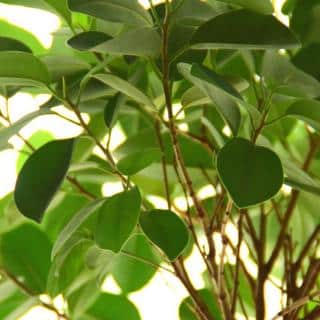 Ficus mainly absorbs formaldehyde, xylene and ammonia that is present in detergents.
Ficus mainly absorbs formaldehyde, xylene and ammonia that is present in detergents.
It acts on cigarette smoke, deodorizers and also varnish.
This plant grows fine in a well-lit place. Ficus is particularly well suited to growing indoors in houses and apartments.
Being among the most sold plants overall is also a tribute to its appealing ornamental value.
 Philodendron mainly absorbs formaldehyde and pentachlorophenol.
Philodendron mainly absorbs formaldehyde and pentachlorophenol.
These compounds appear in most materials used for furniture as well as glue, varnish and domestic cleaning products.
This is a plant that loves moisture and will also do very well in a bathroom for instance. Note the drop at right: it isn’t condensation, it’s guttation.
Caring for it is easy and you’ll be seduced by its shiny green leaves.
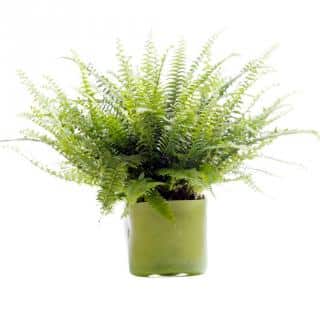 Fern is one of the most effective air purifying indoor plants.
Fern is one of the most effective air purifying indoor plants.
Very effective thanks to its increased absorption and rejection capacity, it eliminate most products used house cleaning and upkeep.
Additionally, ferns filter toxins present in furniture-building materials.
For use indoors, choose the Nephrolepsis exaltata.
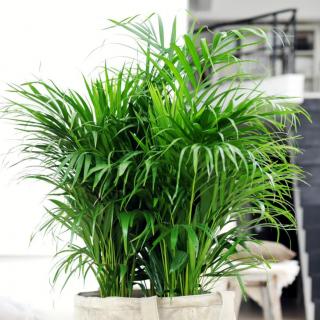 Areca isn’t only one of the favorite indoor plants of all. It is actually among the best air purifying plants!
Areca isn’t only one of the favorite indoor plants of all. It is actually among the best air purifying plants!
It absorbs xylene and formaldehyde very well.
These products accordingly appear in paint and varnish, as well as in most home care products.
Areca like sunny and well-exposed spots.
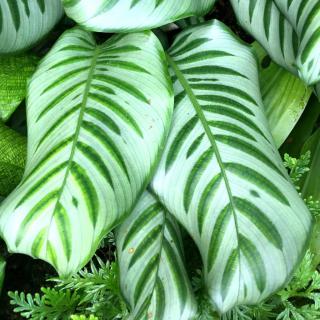 Calathea does particularly well in well-lit spots that aren’t in direct sunlight.
Calathea does particularly well in well-lit spots that aren’t in direct sunlight.
Apart from its extremely ornamental unique and original foliage, it also purifies the surrounding air, filtering out a multitude of compounds that are more or less poisonous.
Caring for calathea is easy and requires practically no care at all, which makes its enjoyable presence all the sweeter.
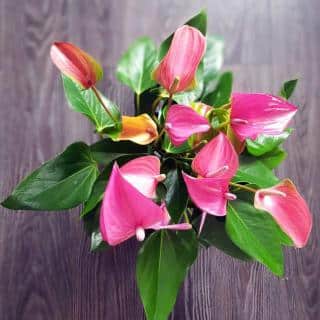 Anthurium has become a must-have in terms of indoor plants.
Anthurium has become a must-have in terms of indoor plants.
Indeed, its blooming is marvelous and can last all year round if well cared for.
On top of this, it has the advantage of absorbing many toxic substances such as ammonia.
It is thus perfect to embellish a kitchen or any other rather damp room in the house, such as a bathroom.
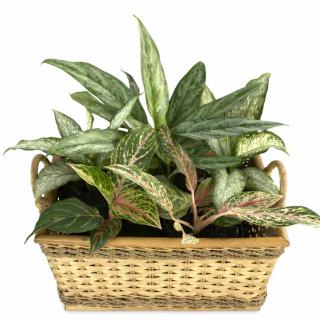 Dieffenbachia is native to Central America and Brazil.
Dieffenbachia is native to Central America and Brazil.
Care, repotting, watering and exposure are as many small things to do that will make your dieffenbachia even more lush.
It makes our houses and apartments look lively with its elevated ornamental impact.
Apart from all these advantages, dieffenbachia has the advantage of humidifying the air when it is too dry. Definitely a very useful plant when air conditioning or heating is on.
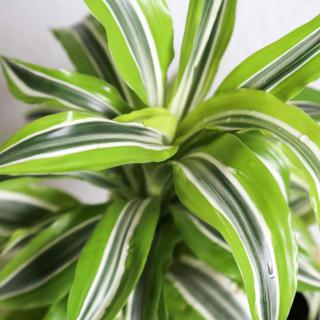 Although some varieties look very similar to palm trees, dracaena isn’t a palm tree.
Although some varieties look very similar to palm trees, dracaena isn’t a palm tree.
But the similarity is confusing and the care it needs is often very close to that of a palm tree.
Both appealing to the eye and very easy to grow, the Madagascar dragon tree is among the most sold and liked indoor plants. With its wispy leaves, this air purification plant is excellent in drafty spots.
Thanks to dracaena, you’ll be ridding your air of formaldehyde and benzene. These are typically found in cigarette smoke. Two famous dracaena houseplants are Dracaena marginata and Dracaena massangeana.
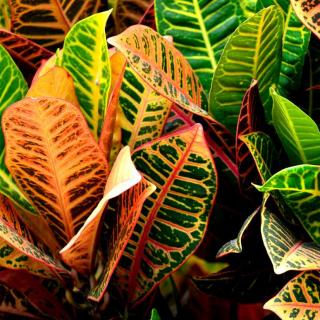 Croton is native to the islands of the Pacific Ocean.
Croton is native to the islands of the Pacific Ocean.
Care, repotting, watering and exposure, are where you must focus your attention to make your croton even nicer.
It makes our houses and apartments look lively with its elevated ornamental impact and unique foliage.
And it also boasts a powerful air purifying capacity and effectively cleanses the air of formaldehyde.
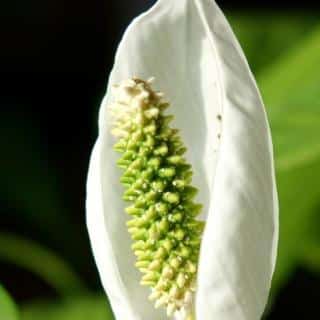 Under our climates, Spathiphyllum adapts well to living indoors in our apartments and homes.
Under our climates, Spathiphyllum adapts well to living indoors in our apartments and homes.
It grows best when surrounding temperatures hold around 68 to 72°F (20 to 22°C).
Both decorative and easy to care for, spathiphyllum has a surprising capacity to eliminate toxic chemical products.
It absorbs compounds that emanate from varnish, plastics, paint and other materials used in furniture.
Lastly, here are a few more very effective air purifying indoor plants:
Note that all these plants filter air more efficiently with high moisture levels in the air.
Finally, another way to reduce pollution levels inside your house is to ventilate rooms of your house or apartment on a regular basis.
This will benefit your indoor air as it will your green plants, too!
To review the first part of this article dedicated to air purifying indoor plants, click here.
Set your air-purifying plants up as an indoor plant wall, it’ll be even more effective and will save space, too!
Hi! Many thanks 🙂 Useful article!
Thank you for this wonderful article. Good health is what we all need and the air we breathe is important. Thank you.
kind regards
Judy Smith
That’s very true, Judy! Our air is loaded with things our bodies haven’t had to deal with, so having plants clear it out is for sure a great help. You’re very welcome.